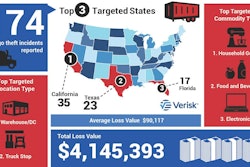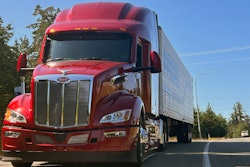This is the second part of a two-part series covering strategies for attracting buyers and preparing for a sale of a trucking company, and how to prepare to enter the market as a buyer.
In the competitive trucking sector, growth hinges on strategic moves that extend beyond daily operations. From market expansion and cost efficiencies to talent acquisition and competitive advantage, acquisition can offer a multitude of opportunities.
First and foremost, do you have a clear objective for what you want the acquisition to achieve? This is a critical step that many buyers often overlook, as many believe that an acquisition is necessary to grow, emphasized Spencer Tenney, president and CEO of Tenney Group.
“We always recommend folks to look inward,” said Tenney. Without having a clear outcome about what they’re trying to create through that acquisition, companies either misuse time and resources, or perhaps get the wrong deal completed and ultimately compound existing problems by not creating efficiency.
A good acquisition strategy starts with careful analysis of the buyer’s strategy, said Jonathan Adams, managing director of transportation and logistics for Capstone Partners.
As acquisitions involve a net exchange of value, Adams recommends asking, “What is the buyer’s competitive advantage and what potential does this give it in the marketplace? What is the risk adjusted return on capital invested in organic growth? How does that compare with the risk adjusted return on the acquisition?”
The challenge with acquisition is assessing risk in your own business and another company of which you have no inside knowledge. Adams said a financial adviser is critical for such decisions.
"Find an advisor that you trust to provide you with a well-reasoned and objective view as to where your true competitive advantage lies," he said, "followed by a list of potential acquisition targets where that competitive advantage will allow you to pay fair value to their owners while still resulting in a value to you that, on a risk adjusted basis, exceeds the return that you could achieve through purely internal investment.”
Arsenio Martinez, partner in McKinsey’s travel, logistics and infrastructure practice, noted that quality should be a key element for a prospective buyer. “I would be looking at the quality of station footprint in terms of the location, state and size. I would want to understand the quality and state of the fleet.”
Martinez also advised to examine the quality of revenue, including balanced trade lanes and a focus on customers whose decision criteria extends beyond rates.
Left Lane Associates President Peter Stefanovich said to look at operational fit, financial fit and corporate culture fit. “Find companies that are in similar lanes so you could grow from a scalability perspective or find something in a different line of transportation that will help you grow with your customers.”
For example, if you’re a dry-van carrier, it might be worth considering acquiring flatbed or reefer to fulfill a customer’s shipping needs with various options.
The wrong kind of deal
Tenney noted that misaligned deals would be overpaying for or acquiring a company that doesn’t offer any beneficial synergies post-transaction, and some deals fall through due to insufficient leadership during transfer of ownership.
He explained, “Either there’s too much concentration in the customer base or there’s insufficient leadership that’s transitioning with the business. Or there’s too much owner dependence, or the existing leadership team is not capable of growing the business moving forward.”
The effectiveness of senior and middle management in concentrating on details, whether in strategy development or execution, is a critical factor to evaluate, said Peterson Hawkins, general partner at Lilium Group.
“Businesses who can’t focus on details are often hard to scale and adapt the culture,” he said.
At the same time, Hawkins added a common mistake is getting caught up on small details that are irrelevant to shared desired outcomes. It’s critical to understand what motivates the new counter party and know how the owner or new management can adapt, he said.













